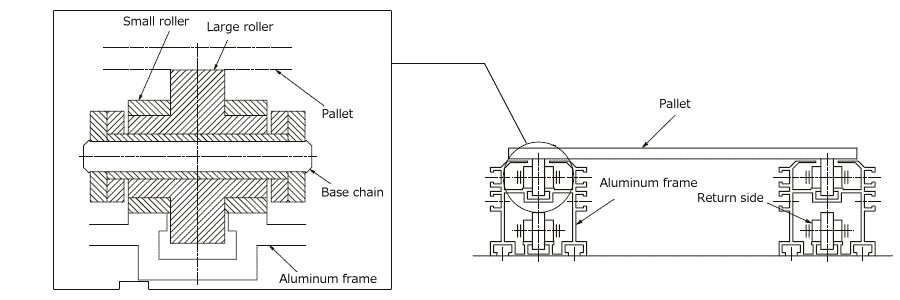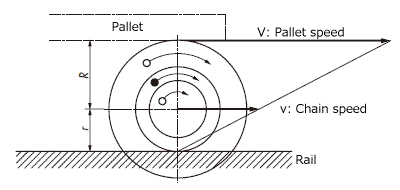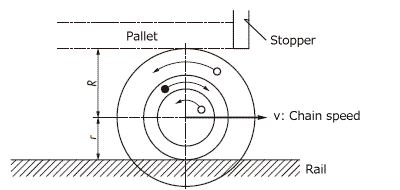Technical Data Small size conveyor chain Double Plus Chain Principle
Double Plus Chain Principle

Conveyance

・Chain speed : ν
・Pallet speed : V
・Small roller radius : r
・Large roller radius : R
Frictional force between the large roller (O) and the small
roller (●) causes the rollers to rotate simultaneously.
The difference in diameters of the rollers causes the speed of
the conveyed object to be 2.5 times that of the chain.
When the chain runs at speed v, the circumferential speed on
the periphery of the small roller (rolling speed on the
rail running face) becomes v.
Since the large and small rollers now rotate at the same
angular speed, the circumferential
Consequently, the conveying speed V is the sum of
the circumferential speed (R/r)×ν and chain speed v.
V=(R/r)×ν+ν
V=(R/r+1)×ν
From the ratio of radii (R/r)≒1.5
V≒(1.5+1)
ν≒2.5ν
Position of chain and pallet during conveyance

When accumulating

When a braking force is applied to the large roller,
a slip occurs between the large (O) and small (●) rollers
so as to allow free-flow conveyance.

